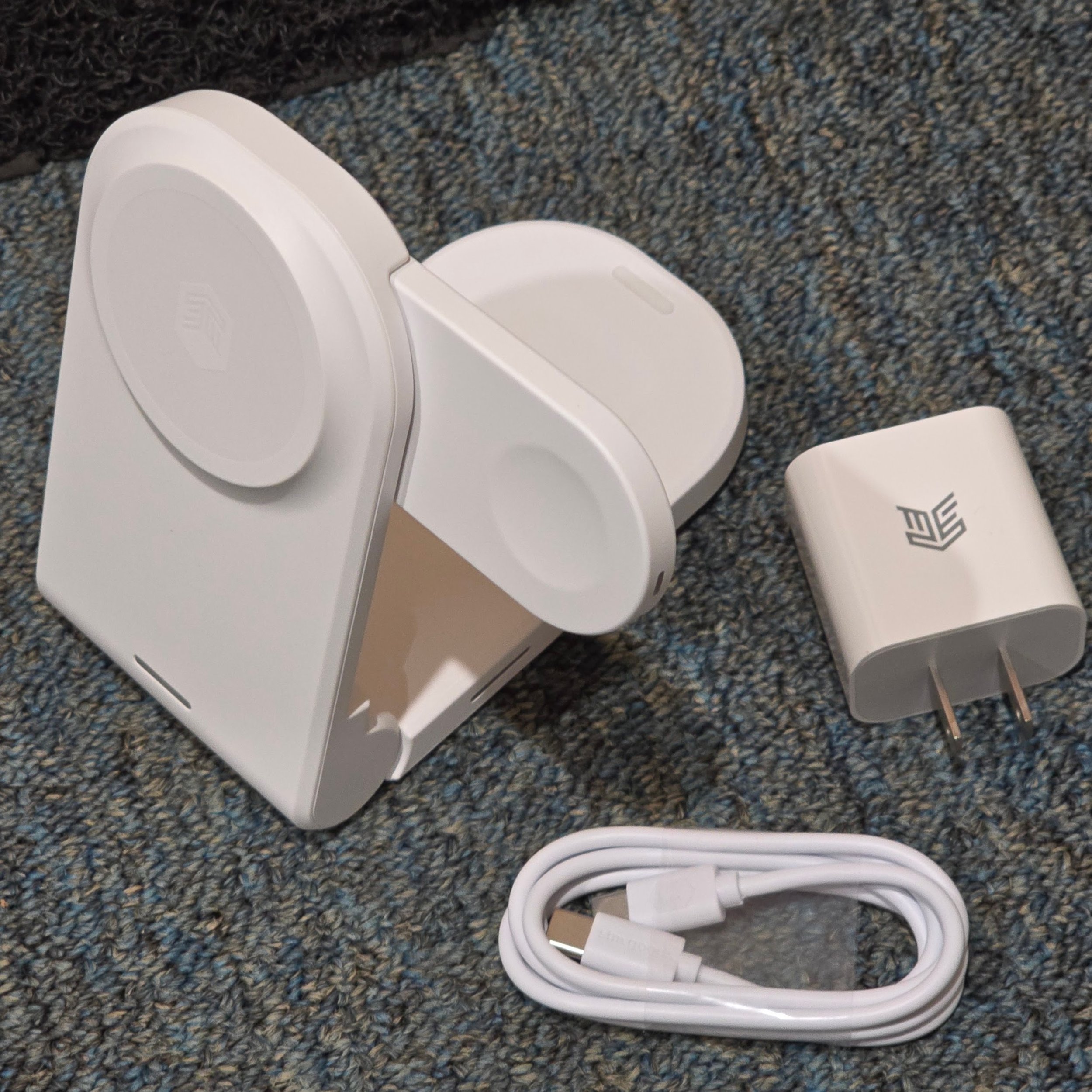Mobile Hardware Ecosystems and Charging Accessories
Apple has been so successful building out its hardware ecosystem that there are multiple options for wirelessly charging an iPhone, Apple Watch, and AirPods. This mini-roundup explains the appeal and reviews three options from three different manufacturers.
Apple is a software ecosystem company that monetizes design-centric hardware. However, that ecosystem is remarkably sticky, and Apple’s attach rate of accessories is high. In fact, so many iPhone owners also buy Apple Watches and Apple AirPods that it has enabled a robust market for third party companies that can wirelessly charge all three at once. Apple’s rivals have certainly taken notice. Samsung has long had its own hardware ecosystem, pairing its Galaxy smartphones with Galaxy Watches, Galaxy Buds, and the upcoming Galaxy Ring. Google has Pixel phones, Pixel Watches, and Pixel Buds. Even smaller brands like OnePlus have now added a watch to its phone and earbud lines.
However, none of these ecosystems have the same installed base as Apple, and even with standards-based wireless chargers, non-Apple products have only partial compatibility:
Nearly any wireless charging earbud case will work on that section of the charging pad. This allows for some heterogeneity; for example, you can buy any of these systems and pair an iPhone with Bose QCII earbuds if you prioritize noise cancellation or Soundcore Liberty 3 Pro if you want its sound signature.
Nearly any wireless charging smartphone will work on that section of the charging pad when lying flat, but none have the correct magnet arrangement to charge vertically – yet. The Aukey supports qi2, so some future Android phones should be compatible.
Every smartwatch charging system is different, and I found no smartwatches that would work with these Made-For-iPhone systems other than Apple Watches. Apple’s Qi watch charging solution has a magnet, but it doesn’t require proprietary silicon and can be easily reverse engineered – I’ve had a cheap non-Apple certified charging puck since Apple Watch 2 days. For whatever reason, Apple’s competitors have chosen to use pogo pins or slightly different wireless chargers that can’t access the plethora of Apple Watch chargers readily available.
The Bedside Winner: Aukey
AUKEY’s $120 MagFusion 3-in-1 15W Qi2 Magnetic Fast Wireless Charging Station is an impossibly long name for a product with gorgeous industrial design that functions as well as it looks. Your phone snaps on the front pad, which can be angled slightly in any direction. This is a Qi2 charger, so when Android OEMs start making Qi2 compatible phones, it will work on the AUKEY as well. An Apple Watch charges on the peg behind the iPhone, and earbuds sit at the base. A wall charger and USB-C cable are included in the package.
The AUKEY is tall enough to use iPhone vertically, or just rotate the phone for horizontal StandBy. This capability, plus the minimalist design, makes the AUKEY an ideal bedside companion. The AUKEY does not appear to have any active cooling fans, though perhaps the design and materials simply don’t require it.
The Travel Winner: Anker
When I saw Anker’s $110 MagGo Wireless Charging Station at CES 2024, I told the company’s PR rep that I needed one for my hotel room. It has since become a permanent resident of my travel bag. The Anker folds down into a thick rectangle (1” x 2.5” x 4.1”) and weighs 195g. In use, the front panel can be left in the down position – though this precludes charging earbuds on the panel behind – or angled up to 90 degrees. With the phone angled up, earbuds charge behind the phone panel, and an Apple Watch charger pops up in back. This design keeps the phone charger tucked under the bottom panel and entirely hidden if you don’t need it, and the watch charges well out of the way of the phone regardless of phone orientation, so you can use Apple’s Standby mode.
There is a fan in the unit for active cooling – I did hear it quietly whirring once, but it was not loud enough to disturb sleep – and a wall charger and cable are included in the box. For such a travel-centric product I do wish that Anker would include a carrying case in the box, but that is my only criticism.
STM Goods: Expanding Beyond Bags
STM is a well-established Australian mobile accessories company. I got my first STM messenger bag from the company nearly twenty years ago, and bags and cases are still its primary focus today. However, STM now also has a range of power accessories, so I asked them to send some over.
The STM Chargetree Mag tries to split the difference between the AUKEY and the Anker, with a foldable design that is light (just 176g) and portable, but not as compact (a half inch wider and over an inch longer than the Anker). At only $100, the Chargetree Mag undercuts the competition on price, but only if you already own a capable wall charger; STM’s 20W Power Adapter costs an additional $20.
Aside from its size, the main drawback to the Chargetree Mag is the side-swiveling Apple Watch charger. This hides nicely out of the way when you don’t need it, but when you do swivel it out, the Watch pod is positioned just to the right of the phone charging panel. That’s fine if you charge your phone vertically, but it prevents you from charging your Watch and your phone together if the phone is oriented horizontally. In other words, if you’re charging your Watch, you can use Standby. I suspect that STM designed the Chargetree Mag before Apple announced the Standby software feature.
To discuss the implications of this report on your business, product, or investment strategies, contact Techsponential at avi@techsponential.com.
















